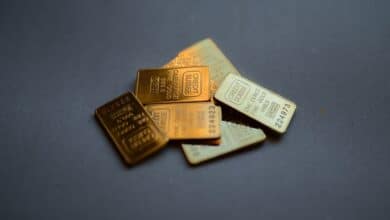What to Do With an Extra $1,000

But long-term savings can turn that extra $1,000 into thousands more, protecting you in retirement, as an emergency fund or as a down payment on a car or house.
I’m focusing on this extra $1,000 figure because it’s roughly the amount I wrote about recently that could be saved by making coffee at home. The annual savings was $1,077.12, to be exact, for one person, and $2,154.24 per couple.
I asked financial experts, mostly financial planners, for their ideas on what to do with that extra $1,000 to $2,000 other than spend it.
Try automatic transfers
The trick, however, is to put aside that extra $1,000 or so saved each month by making coffee at home. As anyone who has tried to save money probably realizes, any savings from eliminating an expense can easily get lost in your checking account and be spent elsewhere. But automatically transferring $90 a month to a savings account or some other account will easily get you to that extra $1,000 annual total.
And $1,000 can be just the start. For a couple, saving $167 per month will add up to $2,000 in a year.
If you have a federal tax refund coming, you could put it all into savings and start earning money on it immediately. The average tax refund is around $2,500, according to the IRS.
What to do first
Each person’s financial situation differs, but there are some first steps to take with that extra $1,000-$2,000 before saving it, says Kate Holmes, a certified financial planner:
- Pay off credit card debt first, and put the extra money you’re saving toward the principal.
- Boost your 401(k) retirement plan savings if you’re not already taking full advantage of your 401(k) match. Then you won’t have that money in your take-home pay to tempt you as you pass coffee shops!
- If you’re saving for a big trip or fun adventure, set up automatic transfers to savings each month to supercharge that account.
- Look at each line item in your expenses and ask how much happiness it brings, Holmes says. You may find other areas to easily cut back, freeing up more money for your “maximum happiness” items.
Here are some ways to save that extra $1,000 or more:
Roth IRA
Put this extra money into a Roth IRA and then invest in the Vanguard Small Cap Value Index ETF, recommends Marcio Silveira, a certified financial planner. The index invests in companies that are small and “cheap,” Silveira says.
A Roth IRA the money will grow tax free as long as it remains in the account, he says. The owner can liquidate it after age 59 1/2 and pay no tax whatsoever.
The economic theory behind the small cap index is that the riskier smaller companies that trade at low valuations will outperform the broad market over the long term, he says. The Vanguard fund has low expenses of less than a tenth of 1 percent, he says
Return: Silveira estimates the annual outperformance of the fund to be about 2 percent. So, if the S&P 500 is expected to return 10 percent per year, the small cap value segment should return 12 percent.
Investing $2,000 at 12 percent for 25 years becomes $34,000.
If a 25-year-old investor does this and the expected return is realized, the total is more than $186,000 at age 65, he says.
For shorter term returns, it’s more difficult to predict, but if the expected return is realized after one year the investor could expect to have $2,240 and after five years it would be $3,525, after an initial investment of $2,000, Silveira says.
Another certified financial planner, Andrew Mohrmann, also recommends that Vanguard fund. Even with the 2008 stock market crash, the fund has returned 8.89 percent during the past 10 years, says Mohrmann, founder of Modern Dollar Planning at modern-dollar.com.
A $1,000 investment in the fund in 2004 would now be worth $2,265.15, he says.
“Small cap value stocks will have higher expected returns over long periods because they are riskier than the big companies like Apple or Walmart,” Mohrmann says. “As an investor, you get better returns in the long run for bearing more risk.”
Build up your emergency fund

Financial coach Katie Brewer says that after paying off debt such as credit cards, student loans and car loans, an emergency savings fund is a great way to save an extra $1,000 or more. The fund makes a lot more sense than charging such large expenses to a credit card and then accruing interest.
Invest in a dull index fund
After first investing 25 percent of your savings in your community, such as through a local organization you support, you then invest the rest in “a low-cost, dull index fund in accordance with your risk tolerance,” says Christina Guglielmetti, president of Future Perfect Planning.
“The more boring, the better,” Guglielmetti says. “Investing should be like watching paint dry or watching grass grow.”
Set up regular transfers to your account, she says, which increases the power of compounding. She chose the middle ground for our savings experiment, going with investing $1,500 per year after donating $500 per year. She notes that if it’s money you need in the next five years, don’t follow this advice because the financial markets swing so much in the short term.
Return: With an 8 percent annual return, after 25 years of investing $750 per year and giving away $250, you’d have $20,400.
For a couple making coffee at home and investing the savings of $1,500 per year and donating $500, the savings would double to $40,800 after 25 years, Guglielmetti says.
“Not bad for a pretty painless change, and this doesn’t even take inflation into account,” she says. Presumably, the Starbucks prices would rise faster than the price of coffee beans, she says.
What other ways would you invest an extra $1,000 to $2,000 per year?





4 Comments